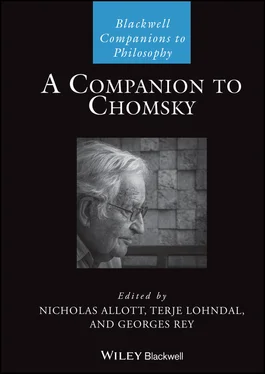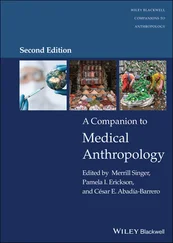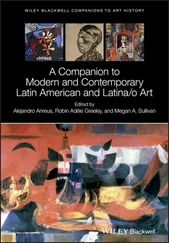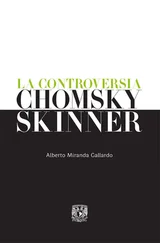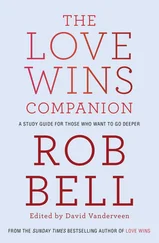A Companion to Chomsky
Здесь есть возможность читать онлайн «A Companion to Chomsky» — ознакомительный отрывок электронной книги совершенно бесплатно, а после прочтения отрывка купить полную версию. В некоторых случаях можно слушать аудио, скачать через торрент в формате fb2 и присутствует краткое содержание. Жанр: unrecognised, на английском языке. Описание произведения, (предисловие) а так же отзывы посетителей доступны на портале библиотеки ЛибКат.
- Название:A Companion to Chomsky
- Автор:
- Жанр:
- Год:неизвестен
- ISBN:нет данных
- Рейтинг книги:3 / 5. Голосов: 1
-
Избранное:Добавить в избранное
- Отзывы:
-
Ваша оценка:
- 60
- 1
- 2
- 3
- 4
- 5
A Companion to Chomsky: краткое содержание, описание и аннотация
Предлагаем к чтению аннотацию, описание, краткое содержание или предисловие (зависит от того, что написал сам автор книги «A Companion to Chomsky»). Если вы не нашли необходимую информацию о книге — напишите в комментариях, мы постараемся отыскать её.
Companion
Companion
A Companion to Chomsky
A Companion to Chomsky — читать онлайн ознакомительный отрывок
Ниже представлен текст книги, разбитый по страницам. Система сохранения места последней прочитанной страницы, позволяет с удобством читать онлайн бесплатно книгу «A Companion to Chomsky», без необходимости каждый раз заново искать на чём Вы остановились. Поставьте закладку, и сможете в любой момент перейти на страницу, на которой закончили чтение.
Интервал:
Закладка:
In the first study, Elissa simply went to people's houses and talked with the mother, and the little kid was on the floor playing with toys or whatever. Occasionally the mother would say something to the child. We examined those little corpora with speech to the other adult in the room, Elissa Newport, versus speech to the little kid, to see if they were systematically different – which of course they were. But we also looked at how differences in what the mothers said to their children affected the children's language development. Within the normal range of mothers, at least, few of the variations among the mothers had any effect on what was happening in the children's group – as we measured it. And we measured it in several ways.
In fact, Elissa studied these data to a fare‐thee‐well for her dissertation (Newport 1975). We were convinced that the maternal style was playing a big causal role in acquisition, so you can't imagine all the analyses that we did. Poor Elissa – she wanted to get her dissertation {finished}, but she kept getting null effects. It took us a long time to realize that that was because the facts were not as we all had supposed. That was the first hint about the relative indifference of the learner to the details of the input (Newport et al. 1977).
Today, of course, we would say that the child is so constructed as to build a grammar of an antecedently well‐defined kind, no matter what you do. This was a very primitive first step, which at least shook us a little bit loose. And that's all it could do, because it was just an observational, ultimately correlational study. Food for thought, but that's as far as we could get.
7.3 Acquisition in the Face of Input Deprivation
What we decided to do with a succession of further students was to look at cases of much more radical deprivation of input. Assuming that what you learn is an infinite set of relations between forms and meanings, the input has to be forms and meanings in some way. The first thing you would think of is you hear your mother say “Blah blah blah,” and a dog walks by. So you learn that dog means “dog.” I have only begged about four hundred questions in so saying, but that's the start of the idea.
7.3.1 Deaf Children
Now, what if you have a kid who is deprived of information about the forms or the meanings? How could you study that? Well, somebody came from the Pennsylvania School for the Deaf to talk to our seminar about deaf children, and we found out from them – and there's a descriptive literature on this topic – that deaf children who are in homes where there is no sign language begin to make iconic gestures spontaneously. People have studied such gestures, and maybe sign language comes from such original gestures. So this might be a route to look at the origins of language in the child and, maybe, somewhat more extravagantly than I {actually} believe, the origins of language.
Susan Goldin‐Meadow, Heidi Feldman, and I had already been convinced by emerging work from [Ursula] Bellugi and others (Klima and Bellugi 1979) that indeed sign language really was a language. We decided to look at deaf children at the stage before they get sent to “deaf school.” In those cases we were looking at, the parish priest would counsel the parents, “Don't gesture to your little deaf child, because if you do they will become too lazy to learn a real language when we send them to deaf school at the age of about five.” So here are these little children in your house exposed to no language whatsoever.
I should point out that, as with Newport, Goldin‐Meadow's first looks here at isolate language, and deaf language, transmuted into her life's work on gesture and sign; and that she too became one of this growing group of people who formed our circle of thought and continue collaborating to this day.
The first idea was to go to these children's houses and see what we could see, and it's hard to believe until you see it. In one of our videotapes, Heidi shows a picture of a snow shovel. And this three‐year‐old points to the snow shovel and produces a gestural monologue of how, when it snows, he puts on his boots, he goes outside, he shovels the snow, and so on. And he expresses himself marvelously well.
So there's step one. And you might say, if you were a minimalist, that there you go, we're done, that's language. Or you might say, well, maybe we can do more with these data.
I already believed that every verb comes with its own mini‐grammar, as per The Great Verb Game. And if these children had the same logical ideas that you and I have, then they would believe that give involves three arguments, and you map it onto language with an NP for each argument, roughly speaking. So give and sleep and eat ought to behave in different ways structurally. Now we asked (Feldman et al. 1978), for the seven deaf kids that we looked at, do they make this distinction?
Now you have to become a psychologist, because life is very tricky – little kids at this age produce first only one gesture at a time, then two, then three, then many. But the two‐word period of language production is when we had most of our data – Mommy sock and all that. So how are you going to find out whether give and eat and sleep have different structures?
Well, let's pretend for the moment – this turns out to be a good pretense – that as far as the output system is concerned, there's this period in which you only have two spaces. You can only say two things. You've got to say the verb. Now, it should be that the required argument always appears as an overt gesture. So where you have {an intransitive verb like} sleep , everything is fine, but where you have eat , each of its arguments will be produced only half of the time, because one space is taken by the verb. You can just do the arithmetic. And for give , {as in She gave him the cake }, the proportion should be even lower,
But another thing about language use is that, when an argument goes unmentioned, it's usually the subject. In fact, this differential omission of the subject NP could easily be seen in the patterns of the deaf children's signing. They “dropped” the subject proportionally more often as the number of required NPs for some predicate increased. Perhaps this is what was later known as “pro drop” in linguistic circles. 2
That's what we found – for every kid and every predicate. These children exhibit understanding of argument structure, but filtered through this output constraint. Subjects are treated differently from other arguments and words appear in different structures depending on what they mean. And where did that come from? Not from their mothers.
The evidence against my empiricist leanings was starting to pile up here. I was becoming more open‐minded. But I always had to fight against my innate empiricism [laughter].
7.3.2 Blind Children
A couple of years later, along came another brilliant person, whose name was Barbara Landau. She wanted to work on language of the blind. I said to her, “Why would you do that?” And she said, “Well, like you looked at the deaf.” And I said, “Yeah, and later we'll do people with a broken arm?”
And she said, “But there's a reason.” Because to some extent they're cut off from the meanings, or at least from the referents. When you say “It's a cloudy day,” they're cut off from the clouds. There's some difference or diminution in your ability to relate the words that you hear to what's going on in the world. And after all, you “must” have learned your language that way – of course, a topic that both Locke (1690) and Hume (1738–1740) had discussed centuries earlier.
Читать дальшеИнтервал:
Закладка:
Похожие книги на «A Companion to Chomsky»
Представляем Вашему вниманию похожие книги на «A Companion to Chomsky» списком для выбора. Мы отобрали схожую по названию и смыслу литературу в надежде предоставить читателям больше вариантов отыскать новые, интересные, ещё непрочитанные произведения.
Обсуждение, отзывы о книге «A Companion to Chomsky» и просто собственные мнения читателей. Оставьте ваши комментарии, напишите, что Вы думаете о произведении, его смысле или главных героях. Укажите что конкретно понравилось, а что нет, и почему Вы так считаете.
